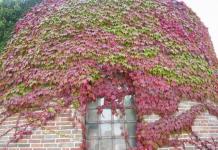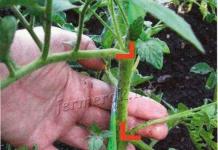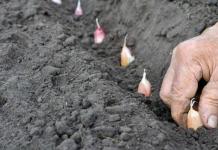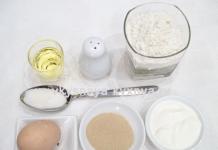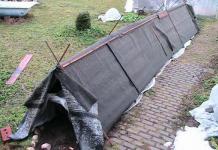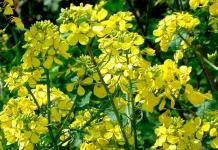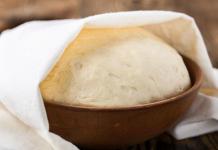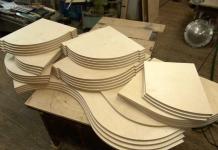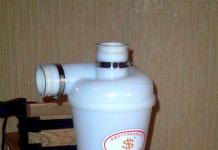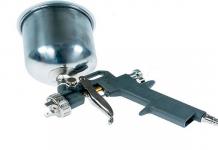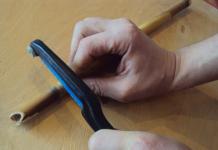Medvedka in the garden is a disaster for a summer resident. Gnawed roots, destroyed seeds, spoiled root crops of radishes, carrots and potatoes - this is not a complete list of "arts", thanks to which summer residents have long put it among the most malicious pests. Therefore, the question of how to get rid of it does not leave the agenda of gardeners.
If you are not a fan of using on your site, there is a good selection of environmentally friendly folk methods that, with regular use, will either get rid of the pest altogether or significantly reduce its number.
soap solution
One of the simplest and easiest methods to use. We saw the entrance to Medvedkino's underground kingdom, prepared a soapy solution and add it in a small stream right into the hole! Only 1-2 liters of water and the insect jumps out of the hole. It remains to catch and neutralize.Special opinion
Many sources advise making "any" soap solution, even from washing powder. I'm going to risk not supporting this advice. Laundry detergents contain phosphates, optical brighteners, synthetic fragrances and many other additives that have absolutely nothing to do in the soil of our gardens! In the end, elementary laundry soap is both cheaper and safer (besides, there is a lot of evidence that even simple clean water drives the bear out of the ground ...)
Traps
The convenience of the traps is that they are “long-playing”: put them in the garden and go about your business, and the traps will “work” for a week (or even two). Here are the most effective (according to summer residents) designs.glass ambush
The principle of this trap is to use the fact that the bear moves underground through already dug tunnels. If you dig a glass jar with a capacity of 0.5-0.7 liters along such a path, then the pest will most likely be at its bottom.
You can pour water into the jar (half), then an additional “enticing” effect will appear - humidity.
honey trap
Dig a glass jar or a plastic container with smooth walls into the ground, smear honey (for smell) on the inside of the jar by about 1/4 of the height. Cover with a piece of iron sheet on top, and pour straw on it. Medvedka will "go" to the warmth and smell of honey.
Trap with beer
Pour 100 ml of fresh beer into a glass bottle with a capacity of 0.5 liters and dig at a slope (as in the figure) into a recess in the soil, and the neck should not touch the soil. Pour the soil in the recess a little and cover it with a sheet of iron, tiles or thick cardboard. "For beer" Medvedka, according to summer residents, "goes well." After 7-10 days, the bottle, together with the insects that got there, is removed, and the traps are placed in other places.
manure trap
The principle of operation of such a trap is based on the fact that the bear chooses a warm, loose soil environment for overwintering. The ideal place is manure. Therefore, if, during the garden, you make 2-3 holes up to half a meter deep in the area and fill them with half-rotted manure mixed with straw, this will become a very useful "military trick". Medvedka will find a winter refuge in such a hole, and a summer resident will find a reason for joy when, having gutted the contents of insidious traps before frosts, he will save his site from the lion's share of the bears and their larvae.
For such a trap, horse manure is considered the best. But considering that we bring a bear into our gardens most often with cow and pork, we can conclude that she does not disdain them either, so you should not be upset in the absence of a horse. Some gardeners “for fidelity” advise adding beer and sunflower oil to manure traps.
Biothermal manure traps It is advisable to do in the spring. Small piles of fresh manure in different parts of the garden will be exactly the places that the bears will choose to lay their eggs. After 25-30 days after laying out the manure, the trap will need to be examined and destroyed by the found bears and their offspring.
egg dessert
Crush the dried eggshell and season with unrefined (scented) sunflower oil (even better if there is homemade oil). This fragrant bait is advised to be placed in all holes and furrows intended for planting seeds and seedlings. Medvedka will definitely “be led” to such a dessert, which, according to garden aces, will be fatal for her. And all the half-eaten shells will be excellent fertilizer. So the recipe is good from all sides: not only safe, but also healthy.deceptive comfort
Medvedka chooses a warm, damp place to build a nest. The principle of the next trap is based on this knowledge. In the video - the story of Elena Terekhova is just about how you can significantly reduce the "livestock" of the bear on the site by simple manipulations with pieces of cardboard or roofing felt:Repelling odors
According to the observations of gardeners, Medvedka avoids some smells. Therefore, they offer:- besiege marigolds, calendula or chrysanthemums in the aisles of vegetable crops;
- spread between potato beds (after flowering) branches of coniferous trees (spruce, pine, fir);
- stick freshly cut stakes or branches of aspen or alder 2-4 cm thick into the ground of the beds (necessarily with bark). It is recommended to stick such stakes to a depth of 25-30 cm, at a distance of 1.5-2 m from each other, and change them as they dry;

- water the “marked passages” places in the garden with an infusion of onion peel and onion waste;
- when planting seedlings, throw a clove or a little crushed garlic into the prepared hole;
- put fresh fish in the holes for planting vegetable crops, which, when decomposed, will give a frightening smell;
- make large furrows along the perimeter of the greenhouses, into which pour naphthalene or sand soaked with kerosene;
- when sowing seeds of parsley, beets, carrots and other root crops, water the furrows with water with the addition of iodine. For 10 liters of water, it is recommended to add 20 drops of iodine.
We invite natural enemies
Medvedka also has natural enemies. And there are a lot of them.Birds:
- starlings;
- crows;
- rooks;
- storks.
From insectivores our allies can be:
- shrews;
- lizards;
- moles;
- ground beetles;
- ants;
- centipedes.
But the anathema wasp Larra, a lone burrowing wasp, uses the bear as a living cradle for its offspring - with a sting strike, it paralyzes the chosen victim and, while it is immobilized, lays its egg in the bear's body. A bear that has recovered from paralysis carries a wasp larva in itself until it is fully developed, and then dies.
"Armor" for seedlings
Many summer residents think over the protection of valuable seedlings in advance, so that in the very first days after planting they do not lose a good half of the planting material. To do this, they make protective “body armor” for the roots and lower part of the stem from plastic bottles, harsh fabrics, thick films and other materials. So, in protective clothing, plants are planted in the ground. The main thing is that such “armor” does not allow the bear to get close to the cherished roots and stems.Medvedka is a really dangerous pest that can bring tremendous harm to the crop. But there are enough ways to deal with it. All presented folk methods have been tested by practice, and they all work. Of course, in different conditions they work differently: where it is more effective, where it is less - that's why they are popular. Therefore, we will be very grateful for your feedback on the methods of dealing with the bear that you use.
The article is posted in sections:



